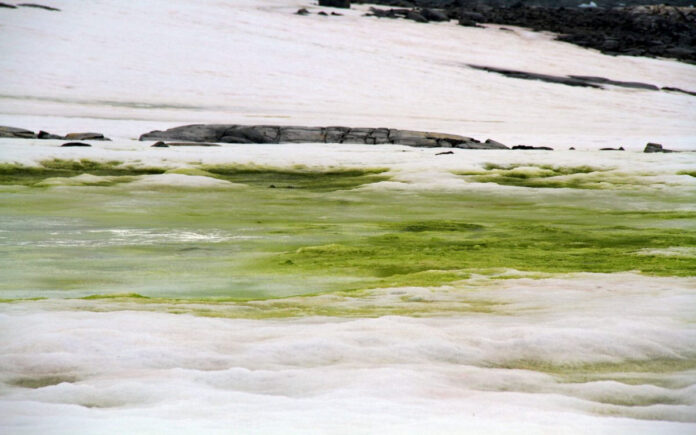London: A new study has sounded the alarm about the alarming transformation of Antarctica, highlighting that this once-icy continent is experiencing an unprecedented greening phenomenon. As global temperatures continue to rise, researchers have documented a significant surge in plant life, particularly mosses and various forms of vegetation, across landscapes that were previously barren and inhospitable. This rapid change underscores the profound impact of climate change on even the most remote ecosystems, raising concerns about the future of this fragile environment.
The research indicates that vegetation cover in Antarctica surged from a mere 0.4 square miles in 1986 to nearly 5 square miles by 2021. Notably, this growth accelerated by over 30 percent during the five-year period from 2016 to 2021.
This trend reflects a broader greening phenomenon in cold-climate ecosystems due to recent warming, indicating that significant alterations in the terrestrial ecosystems of the Antarctic Peninsula may occur, impacting their long-term functionality. Scientists anticipate that this process will accelerate as climate change continues, leading to even more dramatic changes in the region’s landscape. Future research will focus on how plants establish themselves on newly exposed land as glaciers melt and retreat.
Also Read | U.S. Government Invests $72 Million in Bird Flu Vaccine Production by Sanofi, GSK, and CSL
The study involved collaborations between the universities of Exeter and Hertfordshire, along with the British Antarctic Survey. Thomas Roland from the University of Exeter remarked, “The plants we observe on the Antarctic Peninsula, mainly mosses, grow in some of the most extreme conditions on Earth. The landscape is still predominantly made up of snow, ice, and rock, with only a small portion colonized by plant life.”

Research Uncovers Green Transformation of Snowy Coastlines Driven by Algae Growth
As the climate continues to warm, other species may also begin to take root, potentially leading to soil formation and creating opportunities for invasive species to establish themselves. Although most soil in Antarctica is either poor or nonexistent, the increase in plant life will introduce organic matter and promote soil development, which could pave the way for additional plants to thrive.
Also Read | Military Evacuation: South Korea Airlifts 97 Citizens from Lebanon Due to Escalating Conflict
Moreover, a 2020 study highlighted the presence of microscopic algae on the snow surface along the coast, resulting in a greenish hue in the snow. This phenomenon is expected to become increasingly common as global temperatures rise, further contributing to the region’s transformation.



